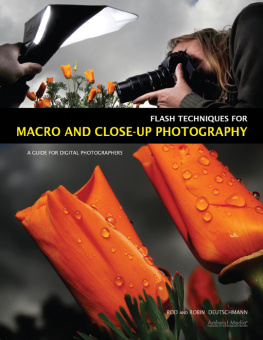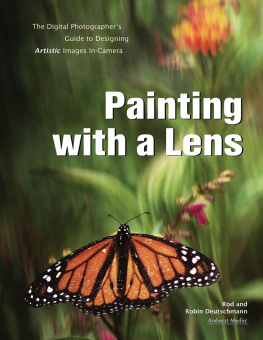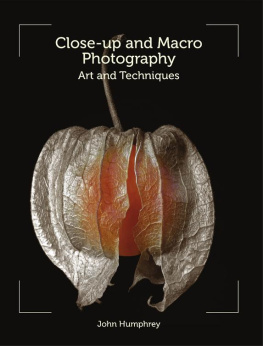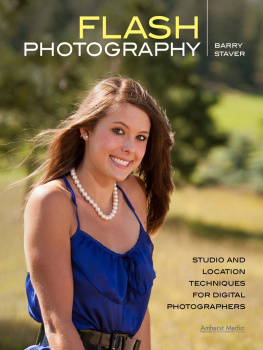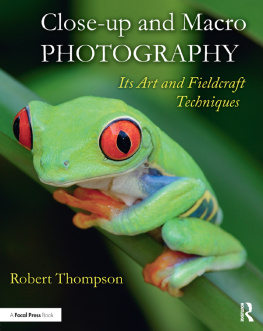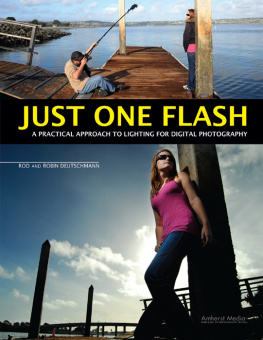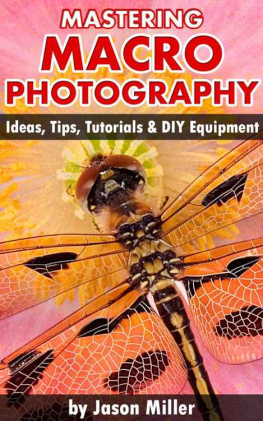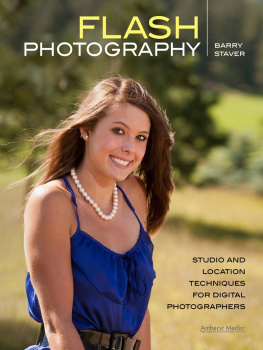Copyright 2011 by Rod and Robin Deutschmann.
All photographs by the authors unless otherwise noted.
All rights reserved.
Published by:
Amherst Media, Inc.
P.O. Box 586
Buffalo, N.Y. 14226
Fax: 716-874-4508
www.AmherstMedia.com
Publisher: Craig Alesse
Senior Editor/Production Manager: Michelle Perkins
Assistant Editor: Barbara A. Lynch-Johnt
Editorial assistance provided by Chris Gallant, Sally Jarzab, and John S. Loder
ISBN-13: 978-1-60895-290-8
Library of Congress Control Number: 2010940510
Printed in Korea.
10 9 8 7 6 5 4 3 2 1
No part of this publication may be reproduced, stored, or transmitted in any form or by any means, electronic, mechanical, photocopied, recorded or otherwise, without prior written consent from the publisher.
Notice of Disclaimer: The information contained in this book is based on the authors experience and opinions. The author and publisher will not be held liable for the use or misuse of the information in this book.
| Check out Amherst Medias blogs at: | http://portrait-photographer.blogspot.com/
http://weddingphotographer-amherstmedia.blogspot.com/ |
Foreword
We have always held firm that its the journey thats most importantthat from these experiences we grow as artists, as photographers, and as people. Through our lifelong exploration of the smaller side of light (and life), weve learned to appreciate the minuscule and see options hidden to most. Its passion, courage, and insight that makes it all happenthat and a few beautiful and amazing tiny creatures and plants. Sadly, not all photographers share our outlook or reverence. They view these small living creatures as objects that can be photographed and tossed away. They talk (and write) of kill jars, stunning insects into submission, and even worse options. This is not just bad advice, its simply wrong. We would like to offer another way of photographing them. Weve discovered that with enough care, patience, and understanding anything is possiblewithout causing any damage or undo stress. If you take your time, if you offer the respect due, these tiny subjects will welcome you. It will happen, and your images will prove it.

In our courses, we instill a sense of respect and admiration for the world around us, showing that expressionism and nature can go hand-in-hand.
ABOUT THE AUTHORS
Award-winning fine art photographers, veteran newspaper editors, and acclaimed photography instructors Rod and Robin Deutschmann have been teaching people to be artists with their cameras for years. Taking a practical approach to modern photography, the duo strips the nonsense from the facts and the hype from the truth. They believe that creativity lies in the artists soul and not his camera bag. Touting the advantages of manual control, they offer a fresh view of photography that rebels against the norm. Their innovative approach and down-to-earth style have garnered them a loyal following of fans. Visit their Web site at www.IFLCSanDiego.com.

1. THE MAGIC OF MACRO
This is not just about taking pretty pictures of insects, flowers, and water dropsits about garnering the experience and knowledge to become the artist-with-a-camera that you know you can be.
T here is something magical about really good macro and close-up images. They provide a glimpse of a world few ever see and fewer still understand. When done well, these images put us in touch with the essence of being, like nothing else. They let us know we are not alone and that every living thingno matter how smallis important. But lets not kid ourselves. There is a reason these images only come from master photographers, real artists with cameras. This type of work requires a high level of mechanical competency and unrestrained vision. Relatively few photographers today are willing to sacrifice the time and energy needed to master their own equipment and focus their vision on such a specific and ethereal goal.

Here, a photographer uses a modified off-camera flash, three extension tubes, and a flipped 50mm lens. This gear choice wasnt random. It was the only collection of tools that allowed his vision to shine. Granted, it may not be the most glamorous (or traditional) of photographic setups, but it gets the job done as nothing else can. For the macro and close-up artist, its not just about looking the part, its about accomplishing a goal and speaking your mind.


Facing pageGetting up close and personal with life and natureno matter how small it might beis something that every macro/close-up artist adores. While the techniques and mechanics required to capture dramatic macro images like this one may prove challenging at first, with patience, dedication, and love anything is possible. Great macro and close-up photographs arent taken by technicians, they are created by caring, loving, and knowledgeable artists. RightYou are in full control when using an off-camera flash; you can manipulate the scene, adding or taking away light to your hearts content. If you want to add light to the background instead of the subject (as in this photo), then do it. Thats the beauty of having a flash off-camera: your creativity is not restrained. Every tier of graphic information can be lit a different way. This is power, this is magic, this is what you want to doits who you want to be!
Yet, here you are, searching for answers, looking for tips, hunting down tricks. Bravo on your decision, your courage, and your interest in flash techniques for close-up and macro photography! We applaud your tenacity and foresight. By simply buying this book youve shown that you have the drive required to create amazing images. The only question remaining is this: Do you have the perseverance to make it happen?
THE TRUTH
Macro and close-up photography have their own very stringent set of rules that must be followedbreak them ever so slightly and your image falls apart. Follow them and your images rock. Youre also probably aware of the power that adding off-camera flash affords, allowing for the addition of light from every possible angle. Combined, they offer a chance to strike out against the norm and truly express yourself.
The flash is the key, of course. Once flash is employed, the usual close-up/macro problems disappear. No more will you need to worry about limited depth of field or camera shake. Wind blowing? No problem. Shaky hands? No such thing. Subject moving too quickly? So what? Believe it or not, you can even leave your tripod at home. (We dont use them to hold the camera and would never think of it.)

Yes, manual photography is hardand macro and close-up photography with an off-camera flash is even harder. Rest assured though, that you can do it. Dont give in. Just as our students (pictured here) are doing, push yourself. Learn everything there is to learn about close-up photography, then learn some more. And then, when that cant get you want you want, start creating your own techniques to solve your own problems.
Next page
